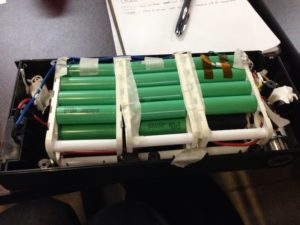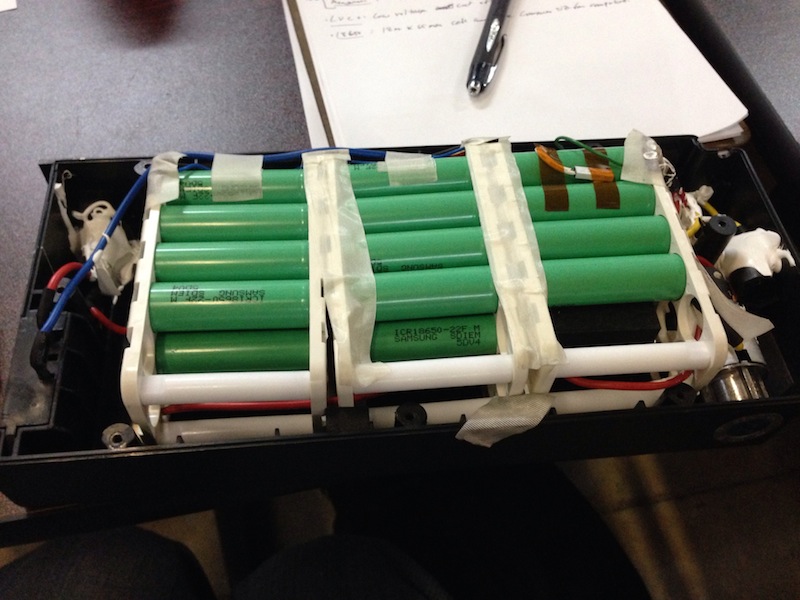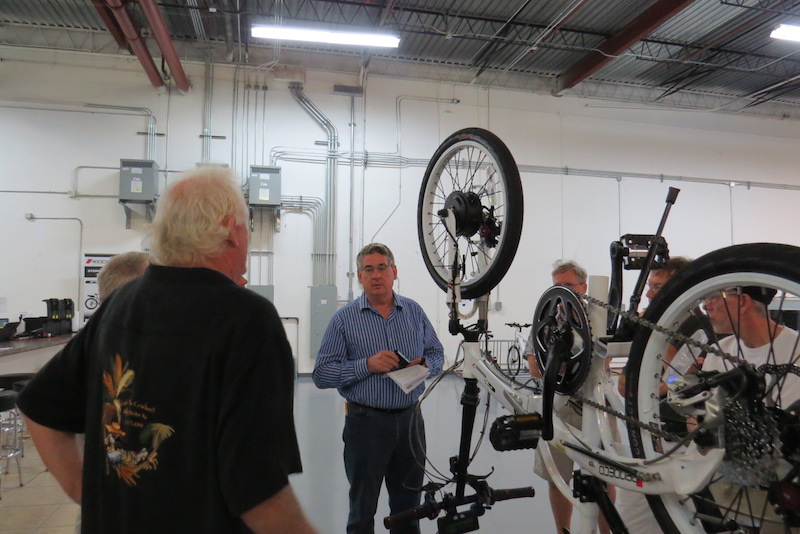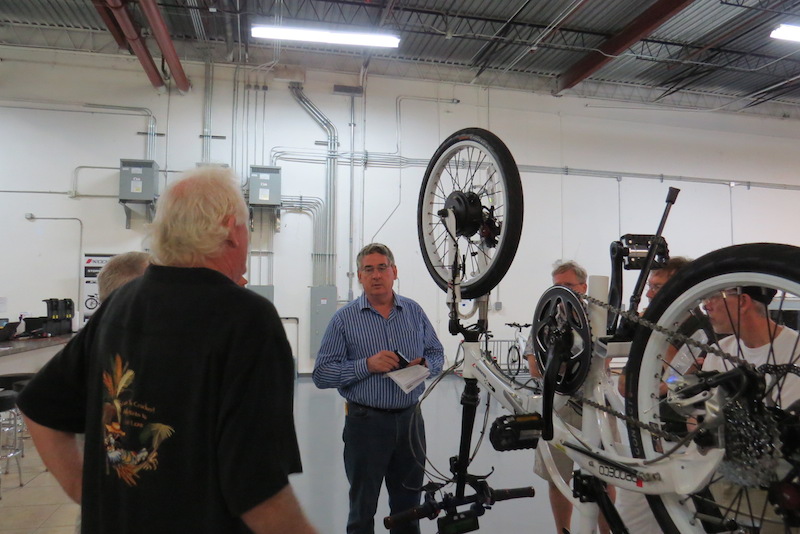Guide, Battery Care & Charging
Preventing Electric Bike Battery Fires: Tips and Video
Understanding Electric Bike Battery Safety
By Edward Benjamin, Lead Instructor of the Light Electric Vehicle Association Technician Training.

Introduction
Electric bicycles have become increasingly popular worldwide, with approximately 220 million in daily service. Despite their widespread use, incidents of battery fires are extremely rare, even more so for electric bicycle batteries. However, it is important to acknowledge that other rechargeable batteries, such as those found in cell phones and computers, can also experience occasional fire incidents.
Rare Occurrences
As an enthusiastic collector of electric bike battery fire stories, I can confirm that there have been less than 20 documented cases over the past two decades, considering the extensive use of over 200 million electric bikes. While rare, recent media reports have highlighted a few incidents of battery-related fires, particularly at bike shops. These occurrences raise important questions and call for increased attention.
The Cause
Most of these fires have been attributed to charging electric bike batteries, often overnight. Similar incidents involving other rechargeable batteries are not uncommon. It is essential to recognize that electric bike batteries are “Large Format” batteries, containing more materials and therefore requiring additional precautions compared to charging a cell phone battery.
Fire Risks and Precautions
It is important to understand that all batteries, including electric bike batteries, possess the potential for fire or explosion. Packing enough energy to propel a rider 20 miles at 20 mph uphill and downhill in a compact shoe-box-sized case poses inherent risks. Even automobile starter batteries come with warnings about the risks of fire and explosion if mishandled. However, it is essential to note that incidents of battery fires are exceedingly rare.
Lessons Learned
In every reported case thus far, the fires ignited while the battery charger was in use and connected to either the battery or the bike. This insight offers valuable guidance on preventing similar incidents. Some reported cases involved incorrect chargers, resembling the correct ones but intended for entirely different purposes. Others resulted from using a lead acid charger on a lithium battery. However, even with the correct charger, instances of smoking batteries or fires have occurred.
Battery Types and Safety
It is worth mentioning that lead acid batteries, commonly used in lower-cost electric bikes, are generally considered stable. However, they can still pose a fire risk if overcharged. Therefore, it is crucial to exercise caution when dealing with lead acid batteries, and a smart charger that automatically shuts off when charging is complete is highly recommended for all electric bike applications.
In conclusion, although incidents of electric bike battery fires are incredibly rare, it is essential to recognize and understand the associated risks. By adhering to proper charging procedures and using the correct chargers, riders can significantly minimize the likelihood of such incidents occurring.
Why Battery Management Systems are Essential for Lithium and NiMH Batteries
While lead acid batteries are generally considered to not require a Battery Management System (BMS), it is crucial for all lithium batteries and the rarer NiMH battery to have this system installed. A BMS plays a vital role in protecting the battery and the consumer from various hazards like overcharge, over discharge, thermal runaway, and short circuits. When a hazardous condition is detected by the microchip controlling a BMS, it triggers solid state switches to turn off, isolating the battery and affected cells. For electric bikes, the BMS is a compact printed circuit board located adjacent to the battery cells. In devices like cell phones and computers, it often functions as part of the microchip operating the device. With a properly installed and functioning BMS, the risk of fire is almost negligible.
Additional Safety Measures for Battery Thermal Management
Moreover, many cell manufacturers incorporate components within the cell itself that can shut it down in case of high temperatures or release flammable gases safely. Some battery packagers even utilize materials that can melt and absorb heat, further reducing the chances of fire incidents. AllCell, for instance, specializes in producing such thermal management materials.
AllCell is an example of a company that offers battery thermal management material.
Protecting Against Fire Incidents: Actions for Consumers and Dealers
However, to minimize the risk of fire incidents, consumers and dealers should follow these guidelines:

1. Prioritize Quality
While a high price is not always an assurance of quality, it is essential to choose batteries made by reputable cell manufacturers such as Tianjin Lishen, Samsung, Panasonic, and LG. It’s important to note that these companies solely produce the cells that are then assembled into battery packages consisting of 10 to 40 cells or more. The assembly process, including correct welding and the installation of an appropriate BMS, is the responsibility of the battery packager. A recent study revealed that the majority of reported “battery problems” were actually due to defects in the battery package assembly.
2. Inquire and Ensure Transparency
Customers are encouraged to ask important questions and seek open and reliable answers from dealers. It is crucial to know the specific details about the cells used, the battery package assembler, the BMS features, and the manufacturer of the charger. Additionally, it is advisable to obtain an insurance certificate from a reputable company that names you as additionally insured.
3. Exclusive Use of Provided Charger
It is imperative to only use the charger that comes with the bike. However, this can sometimes be a challenge, as multiple chargers in a bike shop may look identical and have similar fittings. To avoid any confusion, it is recommended to clearly label the charger in an unmistakable manner, specifying which bike it belongs to.
And at Home, when there is more than one Ebike in Residence, Do the Same.
In the comfort of your own home, it is important to follow the same guidelines when you have multiple ebikes. Consistency is key!
4. Read the Information on the Side of the Charger.
Take a moment to carefully read the details provided on the charger itself. This will indicate the specific type of battery it is designed for, as well as the correct voltage. It is crucial to ensure that this information matches your bike. Personalize your charger by writing the name of your bike on it using a marking pen for easy identification.
5. Keep an Eye on the Charger.
Most chargers come equipped with a handy light that signals when the charging process is complete. There is no need to leave the charger connected and plugged in indefinitely, as this can be both unnecessary and potentially dangerous. It can also lead to premature wear and tear on the charger itself. Stay vigilant and disconnect the charger once the battery is fully charged.
6. Read the Owner’s Manual.
Make sure to allocate some time to thoroughly read through the owner’s manual. Pay close attention to all sections, including the warning notices. Being well-informed about your ebike will only enhance your overall experience.
7. Dealers
For those who work as dealers, it’s important to acknowledge that you may encounter batteries with limited information. Some of them may be damaged, while others might have been misrepresented by the consumer. At times, you might even come across defective or subpar quality batteries. Taking precautions and handling these situations with extreme care is paramount. The following steps will guide you on how to do so effectively.
8. At Home
When charging batteries at home, it is crucial to find a dry and sheltered location. This ensures that in the event of a problematic battery, it can be swiftly moved outside. Additionally, it is highly recommended to refrain from charging batteries overnight. Charge them while you are awake and attentive to any peculiar smells or signs of smoke.
9. Never Attempt to Charge a Damaged Battery.
Under no circumstances should you try to charge a battery that appears to be damaged or potentially so. If the battery is not functioning properly, it is advisable to seek advice from a LEVA trained technician or another expert before proceeding with charging.
Dealers, pay close attention to the batteries you receive. Although they may come with a warning sticker that prohibits opening the battery box to avoid voiding the warranty, it is important to have an understanding of what lies within. If the supplier is unable to demonstrate an opened box or evades answering detailed questions, it may be wise to reconsider selling that particular battery. Once you do have access to inspect the battery, look out for a BMS (battery management system), sturdy connections, and preferably, cells from a reputable brand.

Imagine a lithium-ion electric bike battery pack with its cells exposed. Quite intriguing, isn’t it?
Personally, I find myself leaning towards 18650 cells, which resemble more robust AA cells, compared to pouch cells that resemble envelopes made of aluminum foil. 18650 cells are typically manufactured using automated processes and are often produced by well-established cell manufacturers, offering a more reliable product. I am not particularly fond of batteries that claim their origin as “proprietary” or try to conceal any information. I believe transparency is key, and I prefer to know the company responsible for packaging the cells into the battery. I tend to feel uneasy when faced with names that are solely in Chinese, unfamiliar to me, or associated with a company that experienced a plant fire a few years back. Trustworthiness is crucial when choosing a packager.
I would never purchase a charger that lacks crucial information such as the output current detailed on its label, or a charger without a UL listing (for the USA) or CE mark. Furthermore, I appreciate chargers, bikes, and batteries that have connectors specifically designed to match only the correct items. This prevents any potential mishaps or errors from occurring.
Ed Benjamin during a LEVA Technician Training at ProdecoTech

The Importance of Having a LEVA Trained Technician
Having a LEVA trained technician on the staff is not just a small step, but a significant stride in the right direction. The LEVA training provides a comprehensive examination of battery issues and safety measures, equipping technicians with the knowledge to prevent or effectively address battery problems and fires.
No one within the ebike industry is taking these matters lightly.
Most industry executives would describe a fire causing injury as a tragic event that they would go to great lengths to prevent. It is important to note that this extends beyond brand managers, distributors, and dealers—it includes the manufacturers of battery cells, chargers, and battery assemblers. Even the insurance companies covering these entities understand the gravity of the situation.
To the best of my knowledge, there have been no reported injuries resulting from ebike battery fires. If you are aware of any, please do not hesitate to inform me at [email protected].
However, fires have indeed occurred.
The litigious nature of the USA means that when an incident with potential legal consequences arises, all parties involved either try to keep it discreet or are compelled to do so by insurance companies, lawyers, and investors. Consequently, obtaining information can be challenging.
Not only are lawsuits a significant concern, but the news of such fires also greatly diminishes consumer and dealer confidence, leading to decreased sales of electric bikes.
Nevertheless, in the USA, the Consumer Product Safety Commission demands that hazardous consumer products be promptly reported to them. This requirement often culminates in a public recall of all affected products as soon as a hazardous problem is identified.
It is worth noting that acknowledging a problem publicly can be a difficult decision for industry executives. Hence, there may be instances where reports are delayed or never made in the hope that the issue is isolated and will not recur. If a dealer or consumer becomes aware of an unreported problem, they can report it directly through CPSC.GOV.
How to Extinguish Lithium Battery Fires:
One of the challenges with lithium battery fires is that extinguishing them is not an intuitive process. If not handled thoroughly, the fire has the potential to reignite. To learn more about this, you can find a video on YouTube by searching for “FAA Lithium Fire.” The video is primarily intended for instructing air crew on how to extinguish fires in laptops aboard airplanes.
How to Safely Handle a Lithium Battery Fire:
- To extinguish the flames, employ a fire extinguisher. This action typically results in the fire being completely extinguished, leaving only smoke emanating from the battery. Most fire extinguishers can effectively accomplish this. However, the task is not yet finished!
- Due to the risk of re-ignition with lithium batteries, it is crucial to promptly cool them down by generously dousing them with water (avoid using ice). Ensure a steady stream of water is applied.
- For optimum safety, relocate the fire outside and immediately contact the fire department for professional assistance.
- Caution must be exercised as the smoke produced during the incident is harmful. Avoid inhalation as much as possible.
The Importance of a Dedicated Battery Charging Rack for Bicycle Shops:
To ensure maximized safety at any electric bike shop, it is imperative to charge all batteries on a specially designed rack.
This rack should be equipped with large, smooth-rolling wheels and constructed using non-flammable materials. It should be conveniently positioned near an exit doorway, without any obstructions hindering its movement.
In the event of a fire, the initial response should involve effortlessly pushing or pulling the rack towards the nearest exit.
The rack should include compartments for storing the batteries, chargers, and a smoke detector. Additionally, a single extension cord should be connected to the rack to avoid any interference when moving it outside. The cord should detach easily as the rack is being pushed out the door.
To prevent charging during nighttime, a timer can be installed to regulate the power supply to the rack.
It is advisable to keep a 10 lb. or larger ABC fire extinguisher, as well as a Class D fire extinguisher, nearby. Additionally, arrangements should be made to have a water source readily available to pour onto the fire once it has been extinguished (e.g., hose, bucket, water-type extinguisher).
Different Types of Batteries Used on Ebikes and their Associated Fire Risks:
1. Sealed Valve Regulated Lead Acid (SVRLA) Batteries: These batteries resemble those used for emergency lighting and computer Uninterruptible Power Supplies. Overcharging them with a constant current charger can result in an explosion and subsequent fire. This issue can also occur occasionally with automobile starter batteries. The problem arises from the release of hydrogen gas, which under certain circumstances can cause an explosion. However, unless the charger is exceptionally powerful, this outcome is highly unlikely, even if the battery remains connected for an extended period.
2. NiCad Batteries: These batteries are seldom used in the U.S. electric bike industry, and any that are found in Europe or Japan are typically outdated. They are generally not regarded as flammable but should be handled with caution due to their toxicity. This is why they are no longer utilized in Europe or Japan.
3. NiMH Batteries: While not common, a few new and older electric bikes may utilize NiMH batteries. These batteries are generally not flammable but can release hydrogen gas and cause an explosion if they are shorted while in a confined space.
4. Lithium Manganese (LiNiMnCoO2) Batteries: These cells are widely employed in various applications, including electric bikes. When properly assembled and managed, they are unlikely to catch fire. However, under certain circumstances, such as using an incorrect charger for an extended period, there is a possibility of combustion. These batteries are popular due to their compact size and affordability.
5. Lithium Iron Phosphate (LiFePO4 or LFP) Cells: Considered the safest among lithium cells, LiFePO4 cells rarely catch fire. Instances of such fires are extremely rare. These batteries are bulkier compared to Lithium Manganese cells, which limits their usage in electric bike applications.
6. Lithium Cobalt (LiCoO2) Cells: Reputable companies do not typically use these cells for electric bike applications. While they offer high energy density and are commonly used in cellphones and other consumer electronics, they are not deemed stable enough for large-scale batteries on electric bikes. It is important to note that there may be confusion surrounding some lithium manganese cells labeled as Lithium Nickel Cobalt Manganese, which are distinct from LiCo cells.

For any inquiries regarding electric bike batteries, feel free to send an email to [email protected].
Edward Benjamin conducting a LEVA Technician Training session at ProdecoTech.
Acknowledgements to Edward Benjamin for his invaluable insights on preventing electric bike battery fires!
P.S. Don’t forget to join the Electric Bike Report community for updates from the electric bike world, as well as tips on riding and maintaining your ebike!





